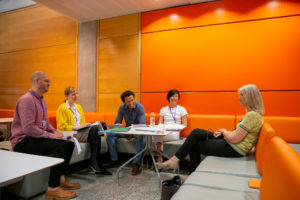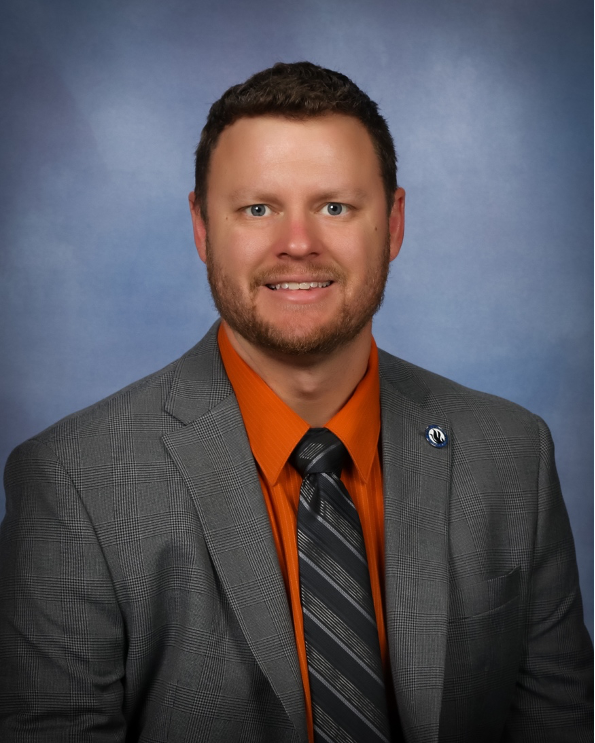Beginning band was an exciting time for my middle level students. For many, it was the first time receiving musical instruction, playing an instrument, reading music, and working collaboratively to create art. This experience led students through a journey of learning, challenges, excitement, frustration, determination, and euphoria. A conductor depends upon those they lead—if they are able to become self-aware, recognize individual strengths, develop a collaborative atmosphere, and celebrate success, they will be successful in preparing those they serve for the performance. This post will dive into these critical lessons learned and how they influence my leadership philosophy as an educational leader.
Become Self-Aware
When we talk about musical performance, we often describe it as a means of self-expression. However, we often neglect to acknowledge that we must know ourselves before we can conduct and evoke artistry from others. In his book, The Musician’s Soul, James Jordan says it like this: “One must take time to understand and accept who one is … At the risk of oversimplifying, one must be able to love oneself first before that love can be shared with an ensemble or an audience through the music.” Not only must the conductor know themselves, so must the musicians.
Many leaders consider this “knowing their ‘why,’” as described in Simon Sinek’s TED Talk How Great Leaders Inspire Action. The question is, how do we discover our “why” and, more importantly, help our teachers discover theirs? Having teachers reflect on their “journey line” on why they became a teacher is a great first step. This exercise requires them to write down memorable events that inspired them to enter the teaching profession and then share one of those stories with their peers.
Tapping the power of storytelling to help discover or possibly rediscover our “why” during virtual and hybrid instruction will only benefit our teachers and their students. Sometimes it helps people to select an Endowed Object that connects them, the storyteller, to something tangible in order to share their personal narrative through the object. Only when we know who we are can we be the leaders our teachers and students need us to be.
Recognize Strengths
Every member in an ensemble has a unique strength. It could be rhythmic accuracy, vibrato, tone, or musical interpretation. When planning a concert program, it is the conductor’s task to recognize these strengths and to select repertoire that highlights and builds upon the strengths of those around them. As a middle level band director, I knew which section was stronger and would select repertoire that showcased their talent while providing the other sections the support they needed to grow. As educational leaders, we must do the same.
Our greatest assets are our teachers. They are highly trained professionals that bring unique talents, perspectives, and innovation in our buildings every day. When planning professional development, consider the following:
- Identify the strength of each teacher. Through observational data, walk-throughs, and conversations, make note of a unique strength of every teacher on your campus. Use this list to recruit presenters for your professional development sessions.
- Create a peer coaching support. As Bruce Joyce and Beverly Showers’ research on peer training shows, professional development outcomes that use coaching see the highest transfer to teacher practice.
Create a Collaborative Atmosphere
Prior to the beginning of any concert, each musician warms up by playing excerpts from the music, etudes, or scales, or they improvise a melody to express their story. During this time, each musician acts as an individual. However, when the concert master stands and plays a single note, the ensemble begins to tune, collaboratively working together to sound as one. The conductor has a vast responsibility to pull highly trained and often sensitive musicians together for a common purpose—to retell the composer’s story.

Conductors accomplish this task by identifying what Itay Talgram calls gaps. In education, gaps are often viewed in a negative light—think about the following gaps often expressed by our teachers:
- The administration never gives us answers.
- There are not enough funds allocated for (fill in the blank).
- Our students are just not motivated to learn.
- That’s the way we’ve always done it here.
Imagine if these gaps were addressed as opportunities to spark innovation and creativity. Composers provide musicians these gaps by being vague in their directions, such as play soft, loud, slow down, orspeed up. The directions are never specific, which allows the individual to retell the story using their own personal narrative and expression. It allows a piece of music to be unpredictable within a set framework. Gaps have to be assigned meaning, and they must happen collaboratively. By doing so, we can change the gaps listed above into something like this:
- The administration never gives us answers—they expect us to collaborate and bring ideas to PLCs and to our leadership team.
- There are not enough funds allocated for (fill in the blank). Luckily, we were able to find community partners.
- I reflected on my own practice to discover why my students are not motivated. I am going to try something different next week.
- That’s the way we have always done it here, but I like your idea. Let’s try incorporating it!
This empowering approach supports the five Community Learning Exchange (CLE) axioms, or guiding values discussed in “Mobilize the Power of CLEs: Don’t Leave Community Learning Exchanges Behind.”
Celebrate Success
Beginning band was my favorite part of teaching band to middle level students. The excitement students had about trying something new (gaps), seeing their leadership skills develop (recognizing strengths), and the experience of creating music together for the first time (creating a collaborative atmosphere) can be euphoric. However, this euphoria doesn’t come without hardship and challenges.
When we began the 2020–21 school year using the hybrid instruction model, I challenged my staff to think of beginning band. I wanted them to see this as an opportunity to make mistakes, try new strategies, and to recognize their own abilities.
We designed our professional development to model hybrid instruction and to immerse our staff in the digital tools and high-yield strategies they could use to reach their students. I explained that while beginning band is often messy and chaotic, with practice and repetition, it quickly becomes something beautiful.
We must celebrate the risk our teachers are taking every day to reach our students and be there to lift them up and coach them when they attempt a new strategy. After all, the performance is about the musicians, not the conductor on the podium, our job is to open the space for others to shine.
Conclusion
If I was to summarize this post with one quote, I would have to choose one from conductor Benjamin Zander’s TED Talk: “The conductor of an orchestra doesn’t make a sound. He depends, for his power, on his ability to make other people powerful.” This quote has guided my philosophy as a band director and continues to do so as an instructional leader.
As we move forward this school year, I challenge you to become more self-aware, identify the strengths of your staff, develop a collaborative atmosphere, celebrate the success of those around you, and lead like a conductor.
What lessons did you learn in the classroom that influence your leadership philosophy? How can reflecting on these lessons keep us connected and grounded?

